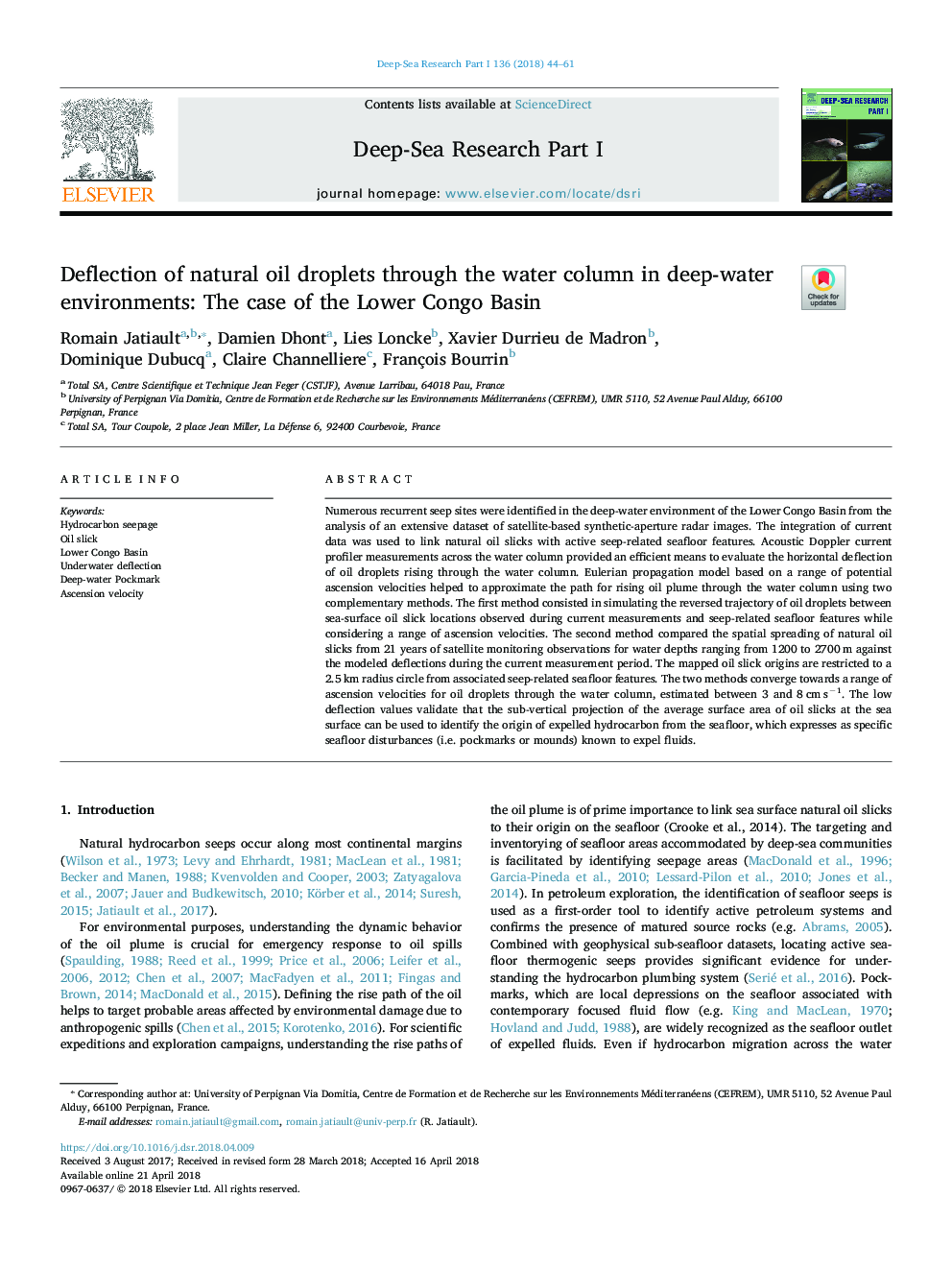| Article ID | Journal | Published Year | Pages | File Type |
|---|---|---|---|---|
| 8884215 | Deep Sea Research Part I: Oceanographic Research Papers | 2018 | 18 Pages |
Abstract
Numerous recurrent seep sites were identified in the deep-water environment of the Lower Congo Basin from the analysis of an extensive dataset of satellite-based synthetic-aperture radar images. The integration of current data was used to link natural oil slicks with active seep-related seafloor features. Acoustic Doppler current profiler measurements across the water column provided an efficient means to evaluate the horizontal deflection of oil droplets rising through the water column. Eulerian propagation model based on a range of potential ascension velocities helped to approximate the path for rising oil plume through the water column using two complementary methods. The first method consisted in simulating the reversed trajectory of oil droplets between sea-surface oil slick locations observed during current measurements and seep-related seafloor features while considering a range of ascension velocities. The second method compared the spatial spreading of natural oil slicks from 21 years of satellite monitoring observations for water depths ranging from 1200 to 2700â¯m against the modeled deflections during the current measurement period. The mapped oil slick origins are restricted to a 2.5â¯km radius circle from associated seep-related seafloor features. The two methods converge towards a range of ascension velocities for oil droplets through the water column, estimated between 3 and 8â¯cmâ¯sâ1. The low deflection values validate that the sub-vertical projection of the average surface area of oil slicks at the sea surface can be used to identify the origin of expelled hydrocarbon from the seafloor, which expresses as specific seafloor disturbances (i.e. pockmarks or mounds) known to expel fluids.
Related Topics
Physical Sciences and Engineering
Earth and Planetary Sciences
Geology
Authors
Romain Jatiault, Damien Dhont, Lies Loncke, Xavier Durrieu de Madron, Dominique Dubucq, Claire Channelliere, François Bourrin,
